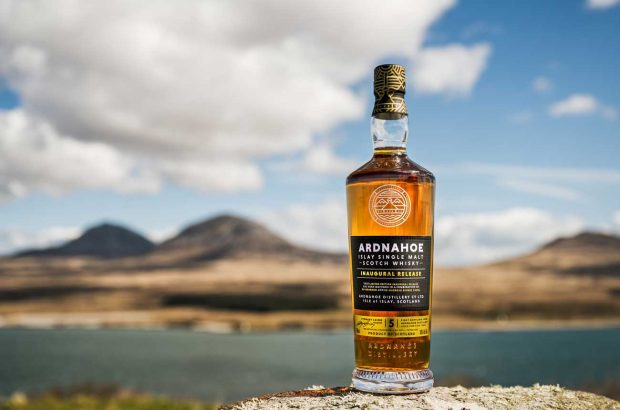Visiting an area with a rich agricultural tradition, Nina Caplan maps out a route to find the best food and wine, with stunning scenery along the way.
FACT FILE
Planted area 1,535ha
Production (2012) 85,000hl
Main grapes White: Prosecco (or Glera), Chardonnay, Pinot Grigio, Arneis, Riesling
Red: Sangiovese, Cabernet Sauvignon, Nebbiolo, Barbera, Pinot Noir, Shiraz, Graciano, Pinot Meunier
Aside from the fact that it is, without question, a valley – one that ascends into the foothills of the Victorian Alps and benefits greatly in winter from eager and thirsty skiers heading up the Snow Road – the King Valley isn’t terribly well named. Most winemakers here come from very different stock to Governor Philip Gidley King, who sailed in with the First Fleet; they are Italians who arrived to plant tobacco after World War II, and their surnames and their grapes suggest that this part of northeast Victoria should really have been called La Valle del Re, rather than being named for an Englishman at all.

Credit: Maggie Nelson/Decanter
So plentiful are these winemakers, and so keen on the grapes of the old country, that several have banded together to form a 50km-long wine and food trail called the Prosecco Road. To prevent the road limiting our enjoyment of the Prosecco, we hired a Maui campervan, complete with tiny shower, and, this being Australia, a pull-out barbecue.
At Brown Brothers, we tasted through a vast array of wines at the gigantic cellar door. Brown Brothers doesn’t do minimalism: by far the largest of the King Valley wineries, it produces about a million cases a year from around 45 grape varieties. Many pay homage to Italy, and the roll-call of Italian grapes includes Arneis, Nebbiolo, Dolcetto, Vermentino – and, of course, Prosecco, or Glera. Its Pinot Grigio comes from a single vineyard in the upper valley and has a sea-breeziness that makes an interesting contrast to its yeastier, fruitier Pinot Gris style, picked later from the same vineyard and left on lees for two months.

Brown Brothers Cellar Door, King Valley
The Browns aren’t Italians: the winery was founded by Scots immigrants back in 1889. And they don’t focus exclusively on Italian varieties, offering Spanish grapes Graciano and Tempranillo, international varieties such as Chardonnay and Shiraz – and even Tarrango, an Australian variety that makes a light, low-tannin red.
Wine is the third wave of agriculture on these fertile slopes, following on from tobacco, which supplanted the market gardens of the 19th-century Chinese who came to work in the gold mines. Thanks to varying altitude, well-drained sandy clay and clay-loam soils, and warm, sometimes too warm, weather (it’s cooler at sea level in Tasmania, for instance, than at 800m here), this patch of northeast Victoria can grow practically any kind of grape – and does, from Marzemino to Muscat.
Regional accents
We pedalled slightly woozily a half-hour down the Snow Road, which does not, at this altitude, live up to its name: certainly not in late summer, when it is streaked with sun, except where the cycle track crosses a shady, gum tree-fringed creek. Sam Miranda winery, folded gently into the hillside, was designed by ‘starchitect’ Alex Popov, but there’s nothing high-maintenance about Sam. ‘Prosecco’s great; it’s just not complicated,’ he says, as we sip his very dry incarnation, which tastes of pear and toasted breadcrumbs. ‘You don’t have to think the way you do when you crack a [Penfolds] Grange.’ Sam also finds it hard to say no to a grape he likes: he offers Saperavi and Petit Manseng, neither as convincing as that Prosecco, or as his Pinot Grigio, the grape that’s the main bait in Australia’s attempt to lure drinkers away from the outrageously popular New Zealand Sauvignon Blanc.
Miranda is also trying to make a top-tier Nebbiolo, explaining that the snowmelt that flows into the King River resembles the Alpine water in Piedmont’s Tanaro river. I am not so sure. It’s not just differences in soil and climate, although those are substantial, or the wispiness of Miranda’s Nebbiolo. It seems contradictory to laud one’s own region while simultaneously comparing it to the Langhe, 10,000 miles away in northwest Italy. And I’ve never yet seen a gum tree in Piedmont.
In Pizzini’s gorgeous repurposed tobacco shed, 50km and 300m of altitude up the road, Fred Pizzini takes us through his wines. He is a Nebbiolo obsessive, and here, that mania is paying off: his 2011 tastes nothing like its Italian cousins (there’s a definite whiff of eucalyptus), but its prune and mulling spice flavours are lovely. Christian Dal Zotto concentrates more on Prosecco: his father Otto, Fred’s brother-inlaw and the region’s Prosecco pioneer, came from Valdobbiadene. His NV is good but it’s the L’Immigrante 2014 that grabs me: it’s richer, jasmine-scented and delicious.
These Aussies can’t export anything called Prosecco to Europe, but that’s all right, they tell me: the distance means they couldn’t compete with their distant cousins on price, anyway. At our last stop, Chrismont, owned by another Pizzini cousin, I watch the sun sink softly past vine-covered slopes after a day tasting the most Italian wines never to come out of Italy, and conclude that it’s not such a great hardship to try them here.
How to get there
By plane to Melbourne, then by car via the Hume Highway, a drive that takes between 2.5 and 3 hours. Alternatively you can fly into Canberra; the drive from there takes 4 to 5 hours.
Nina Caplan writes on travel, food, art and film, and has an award-winning wine column in the New Statesman.





